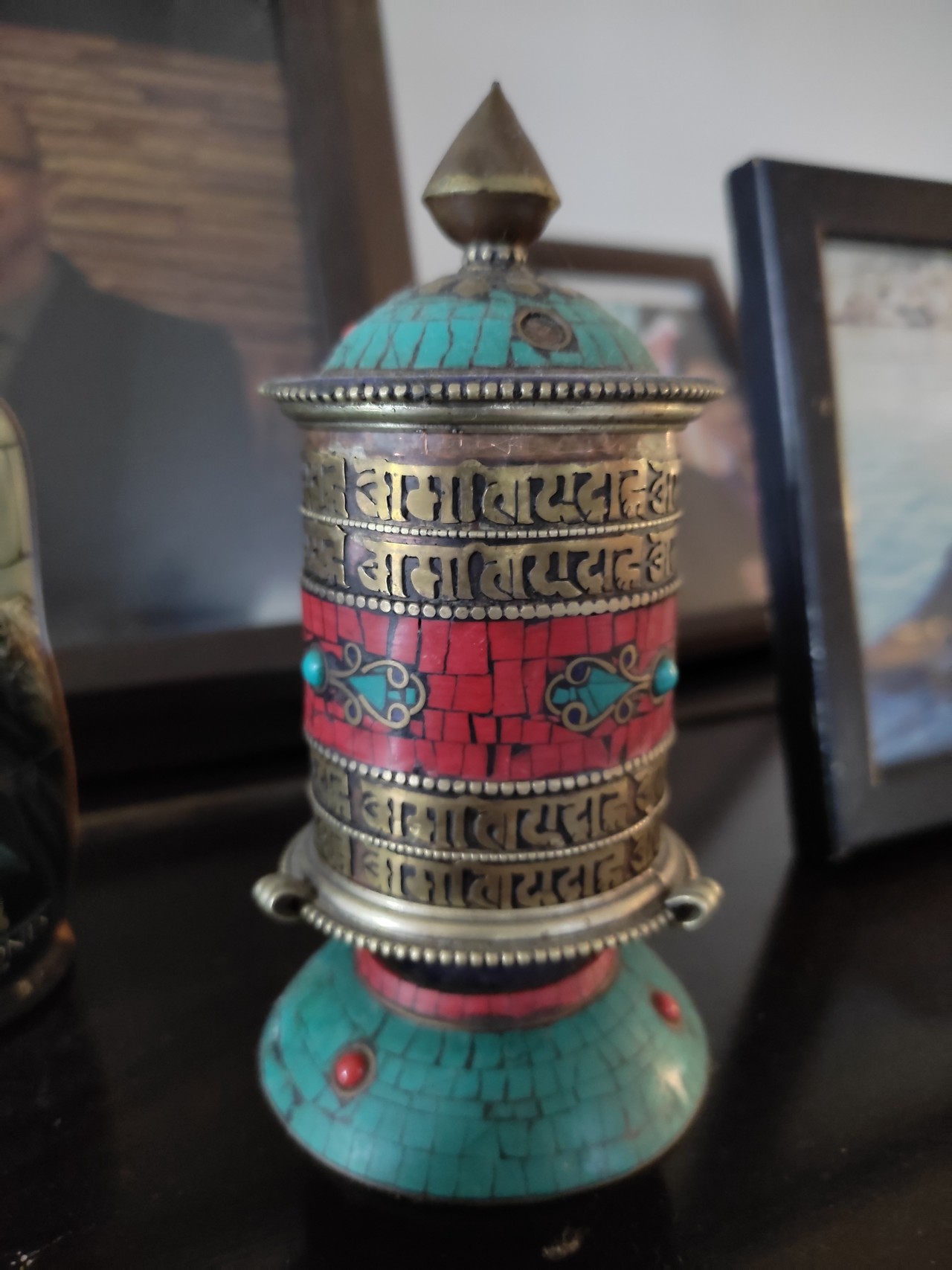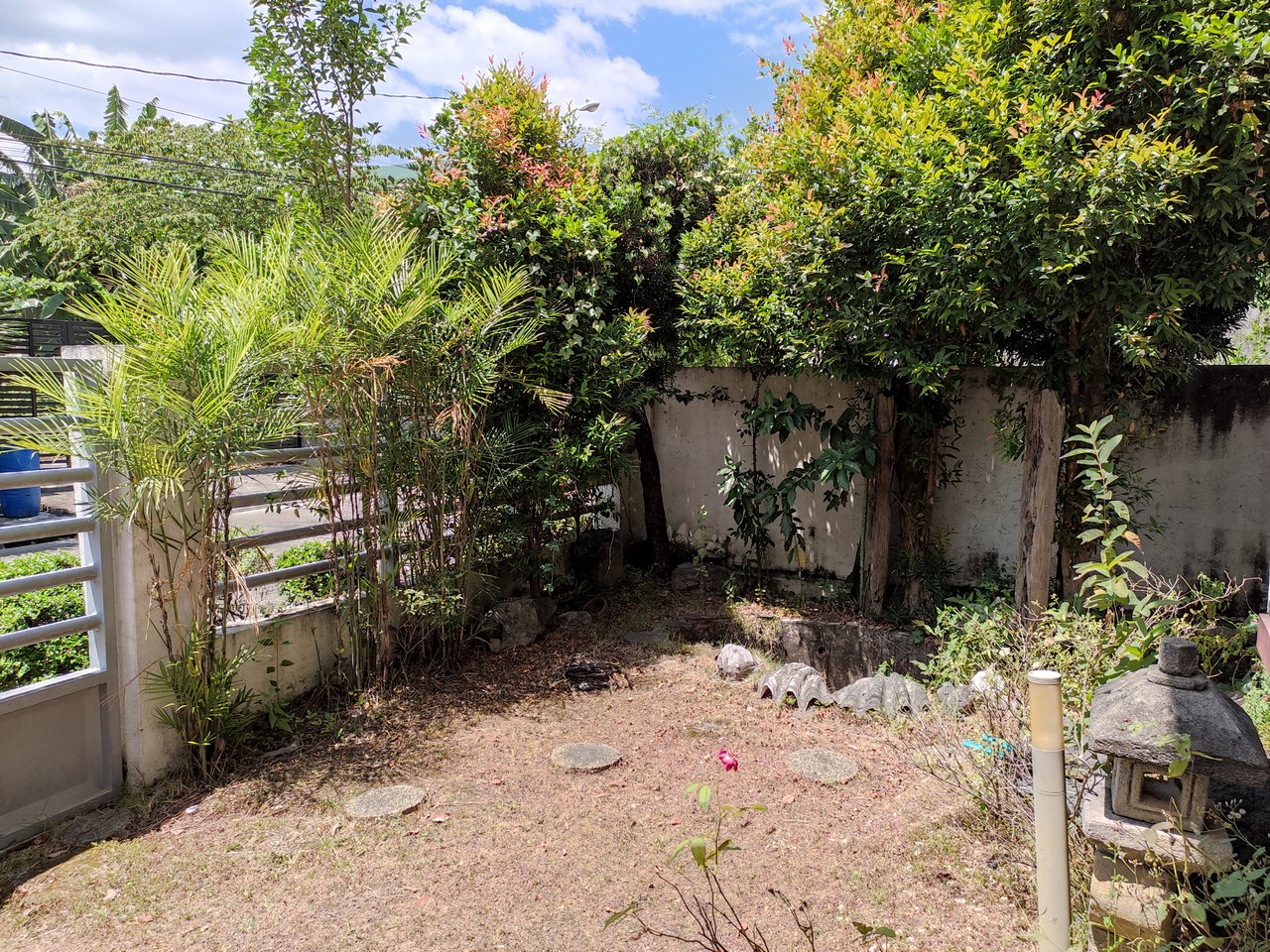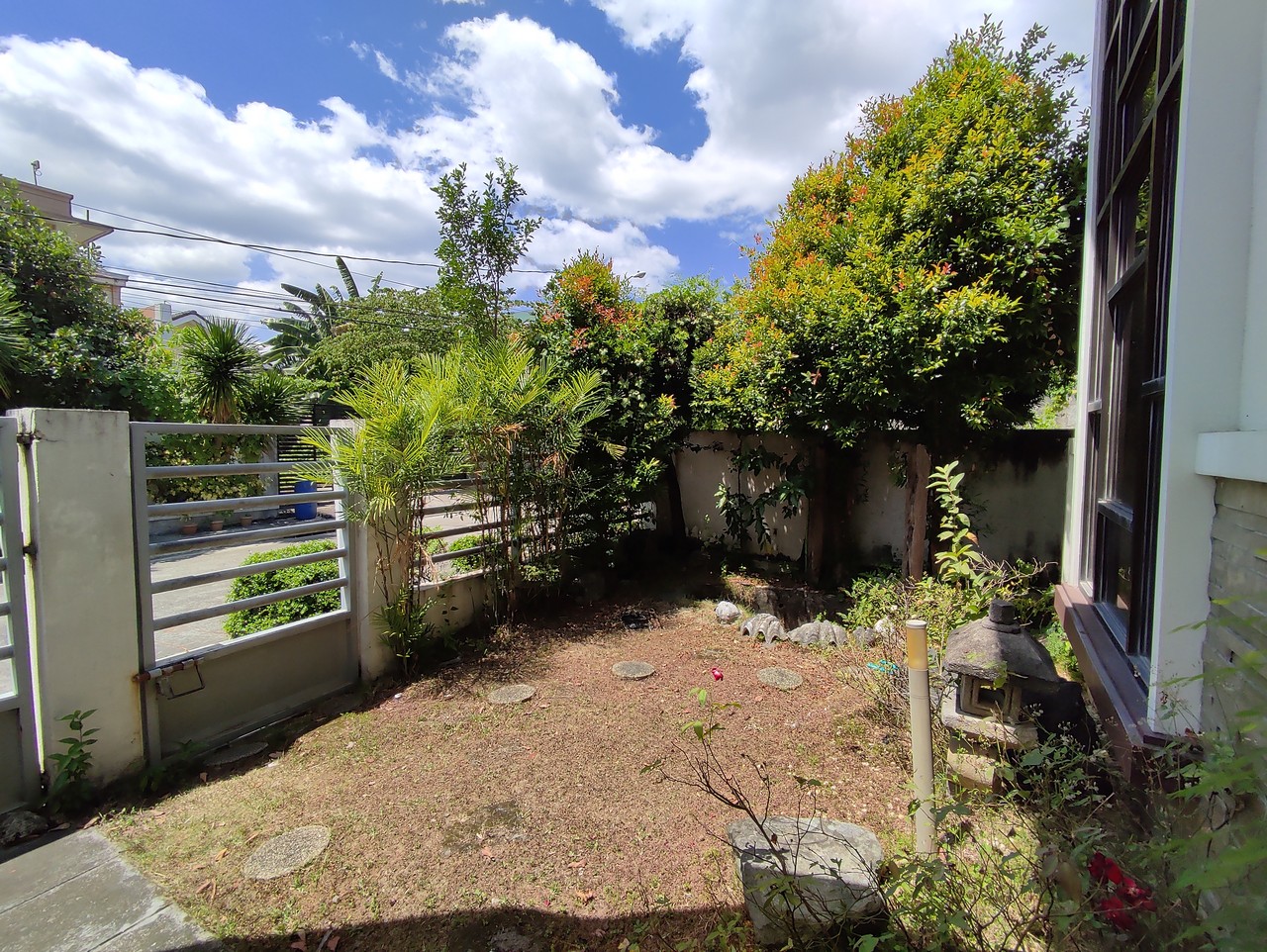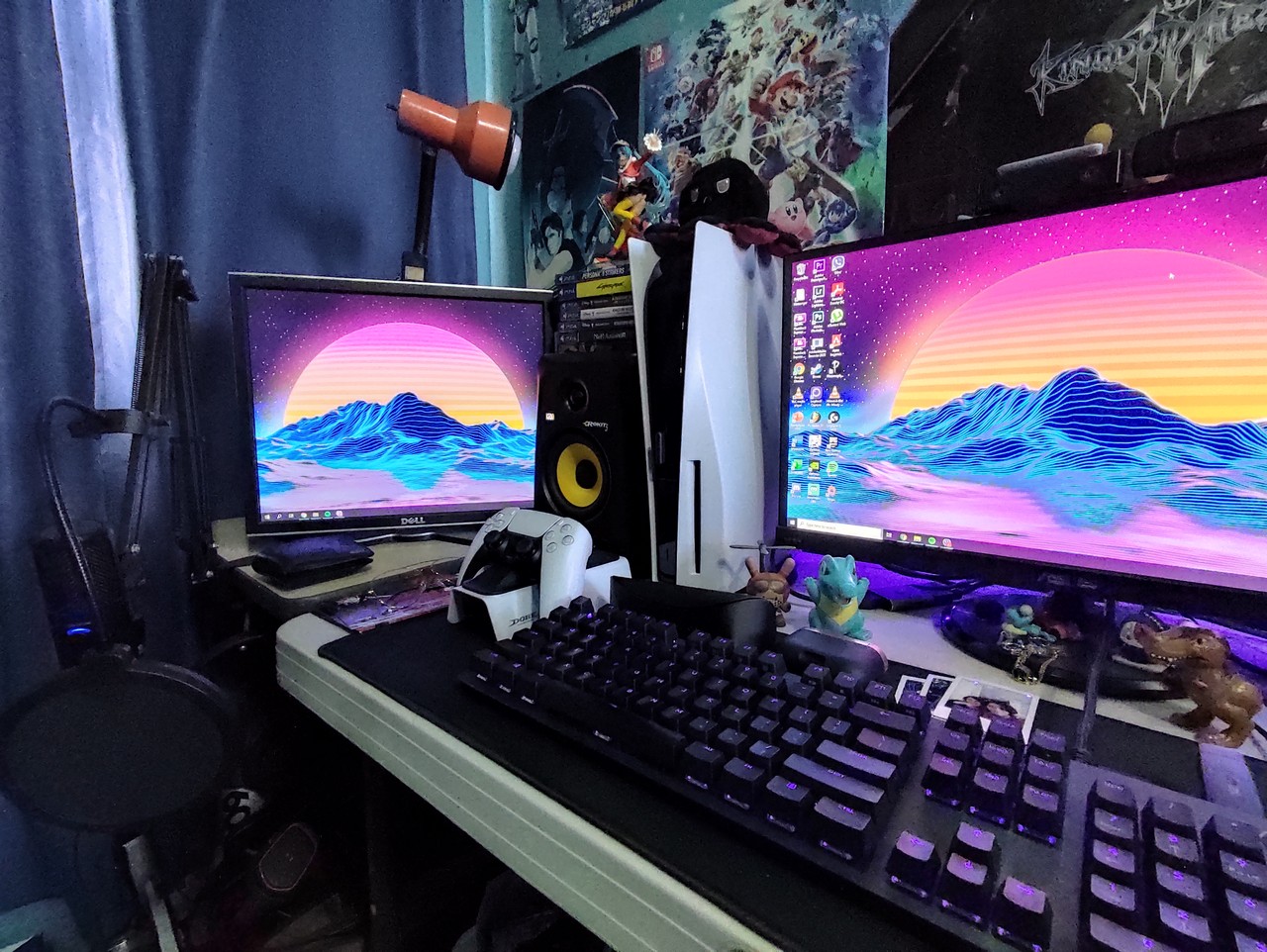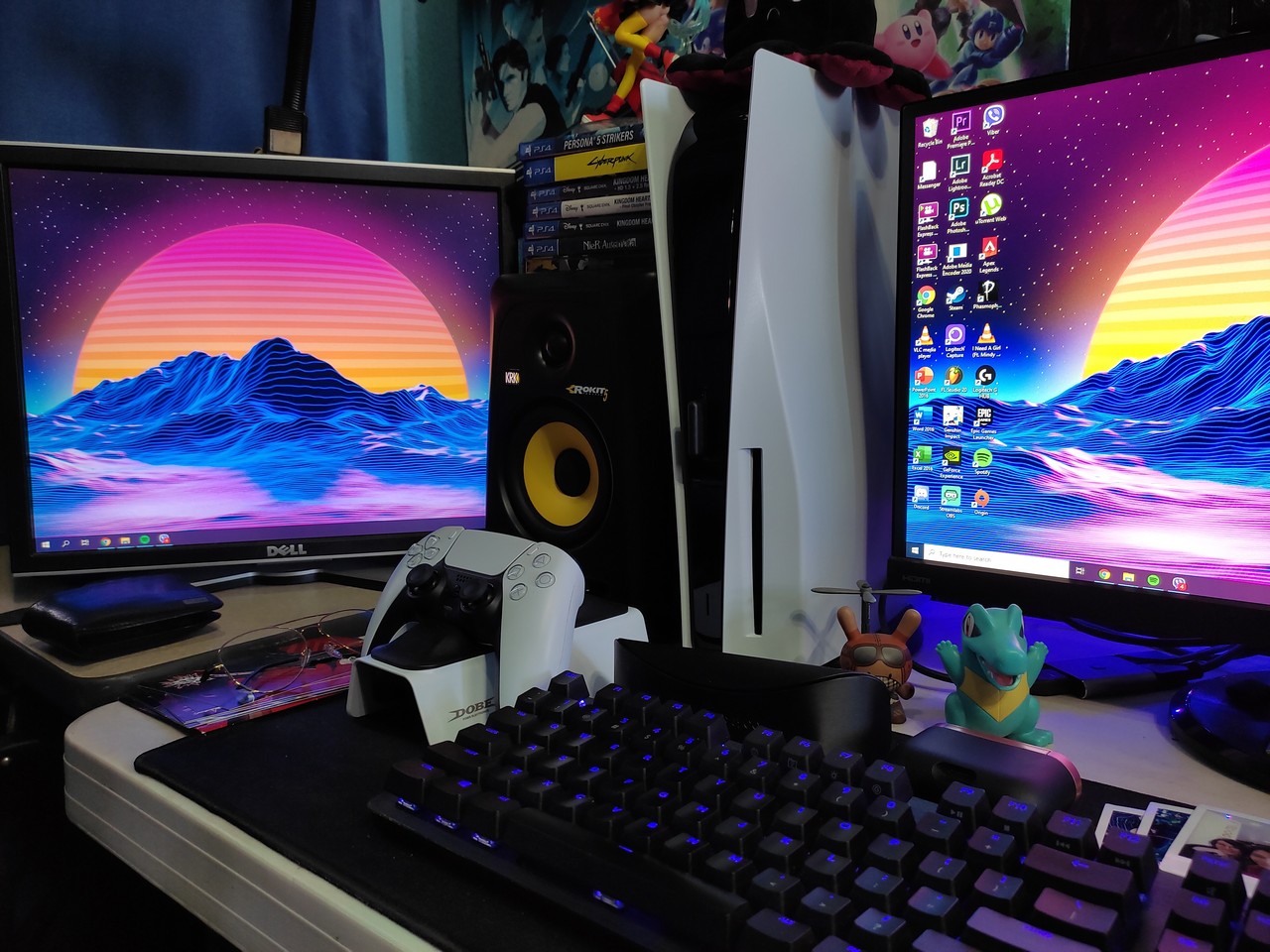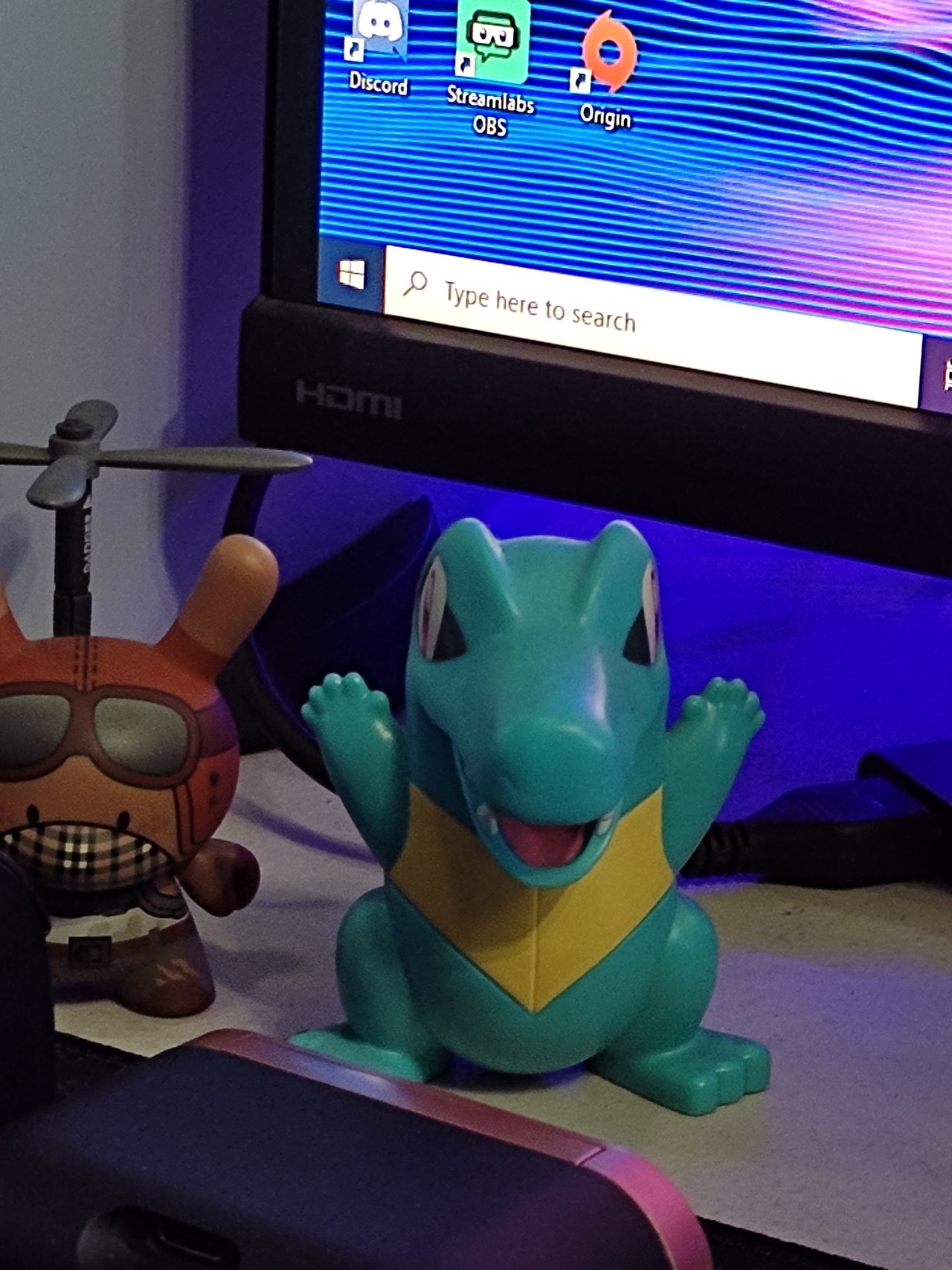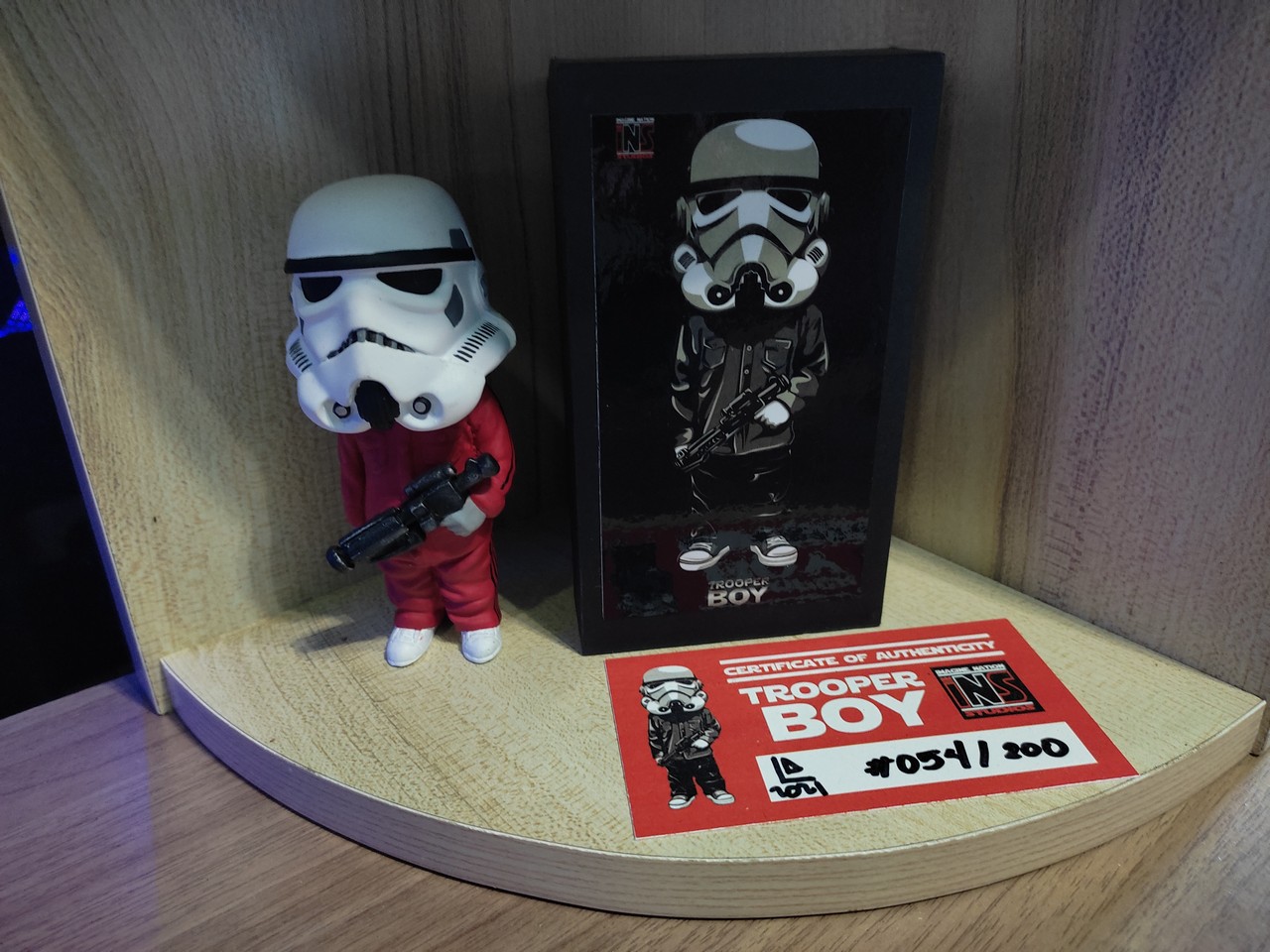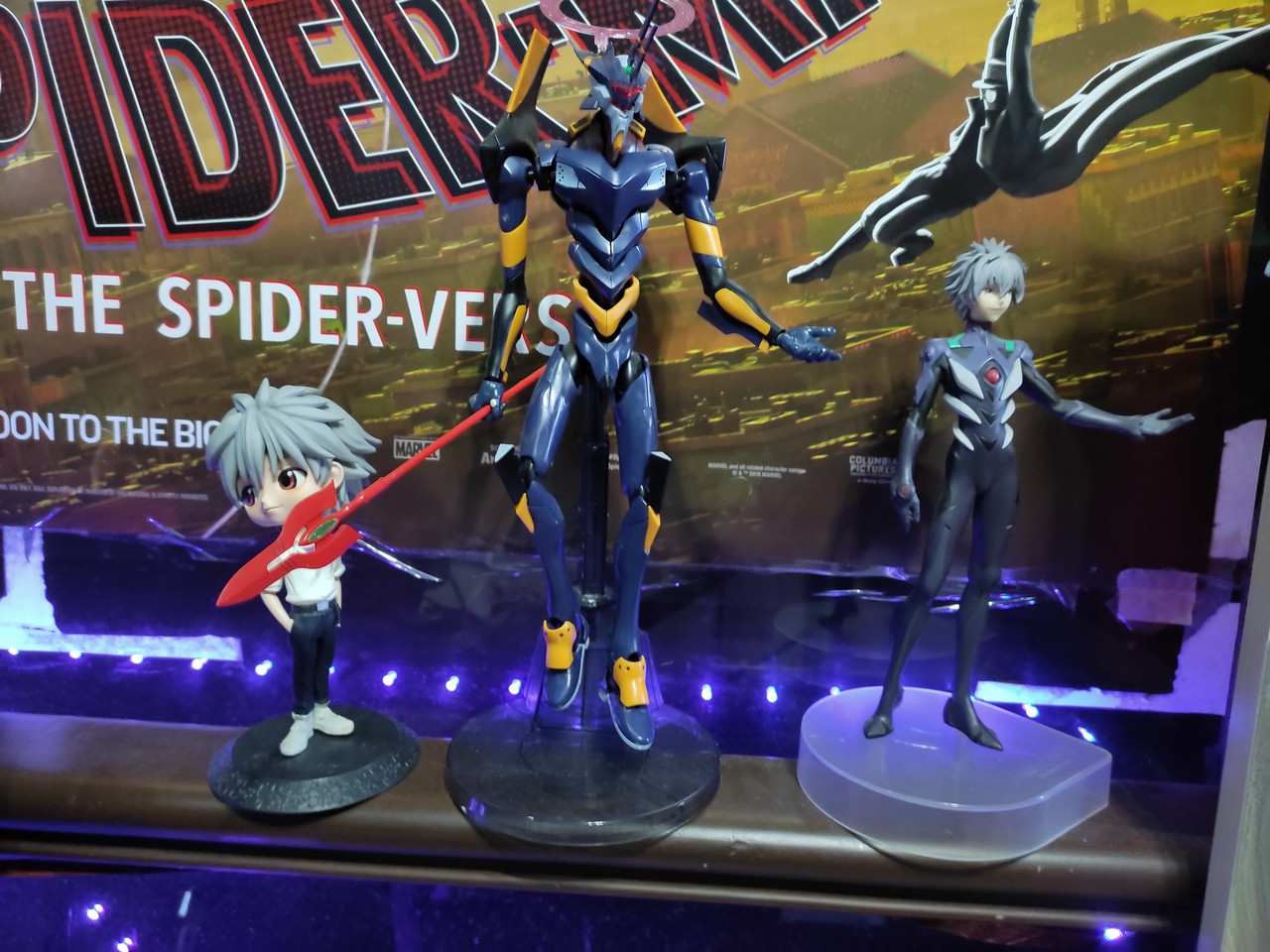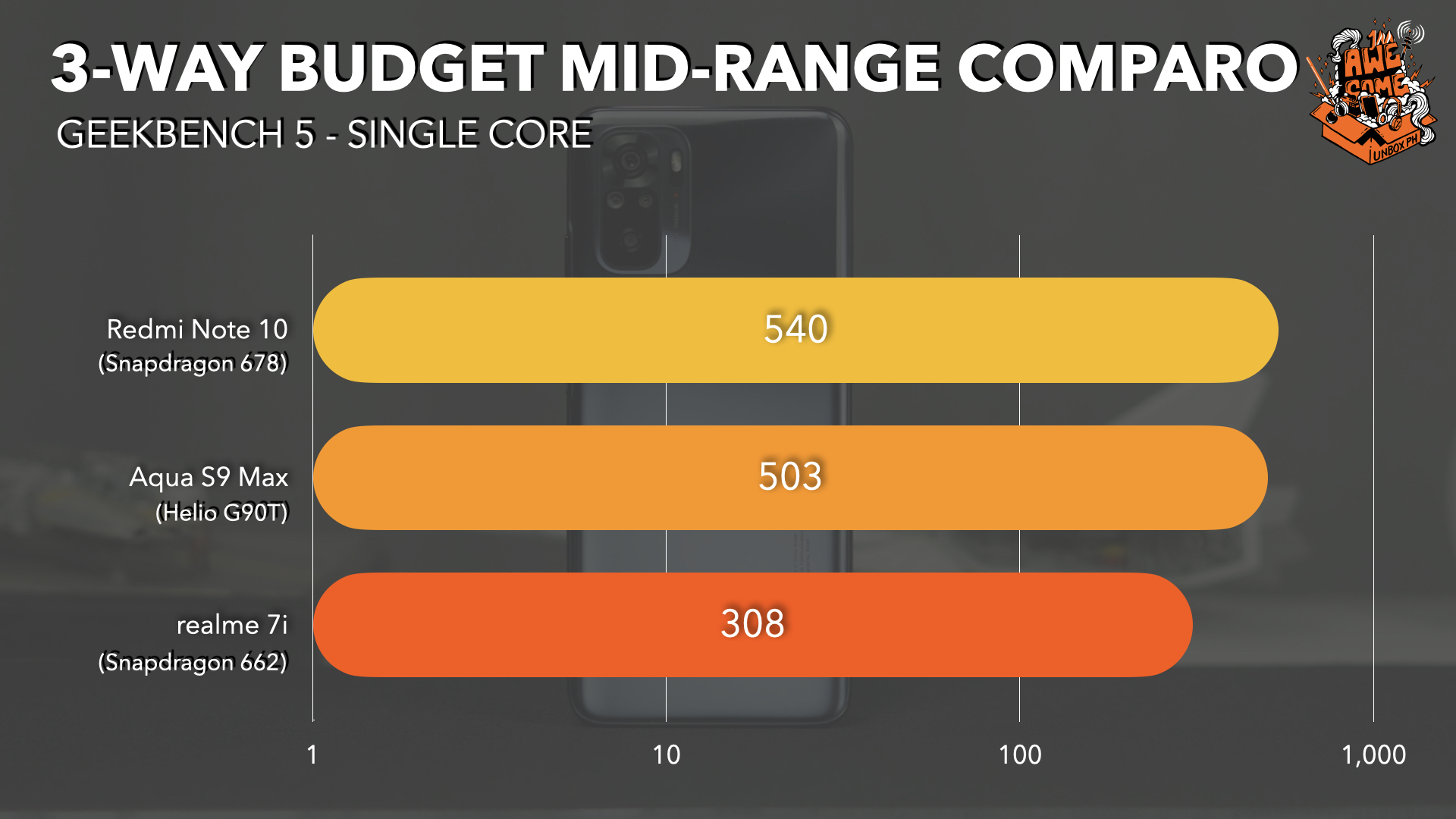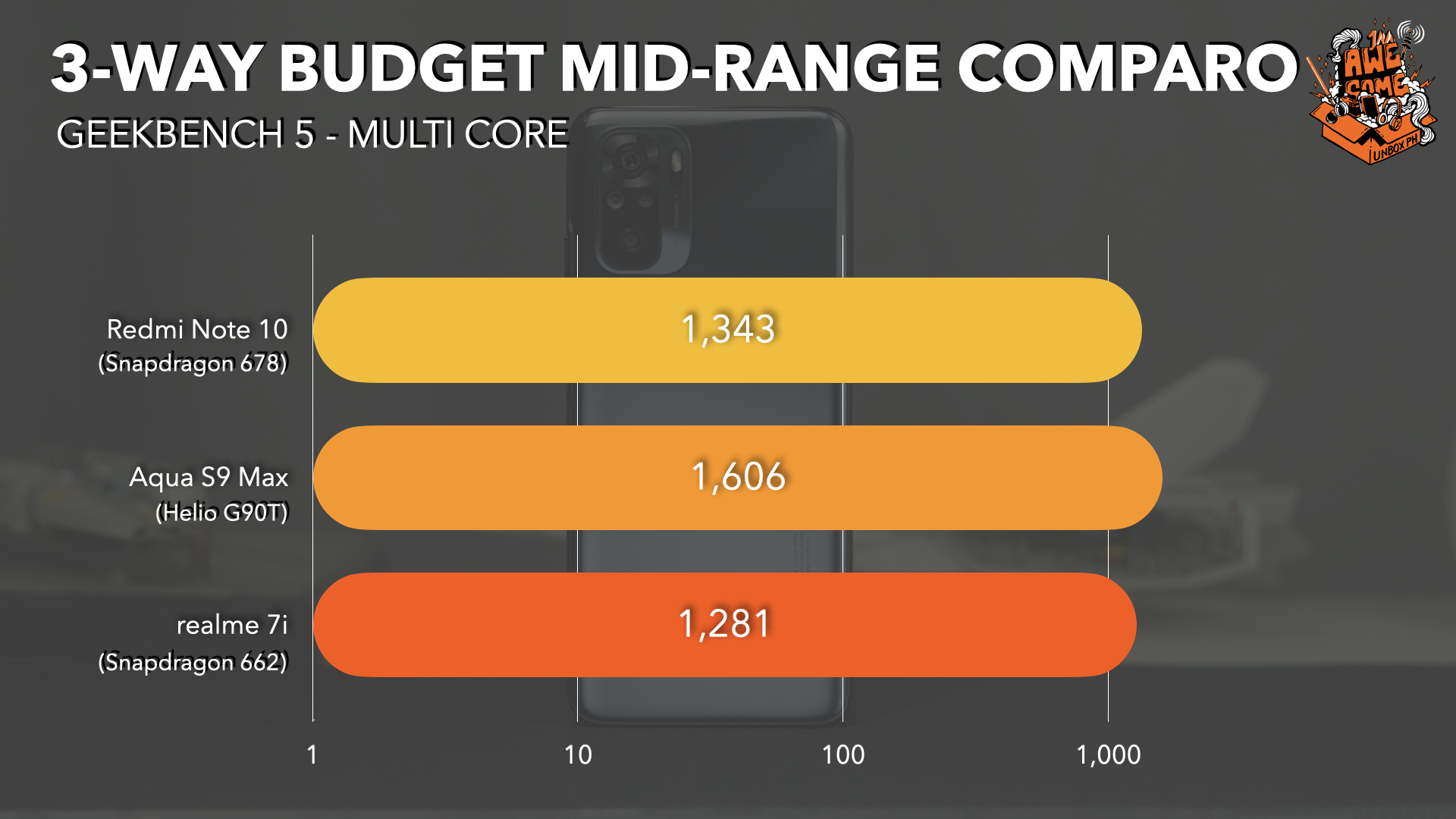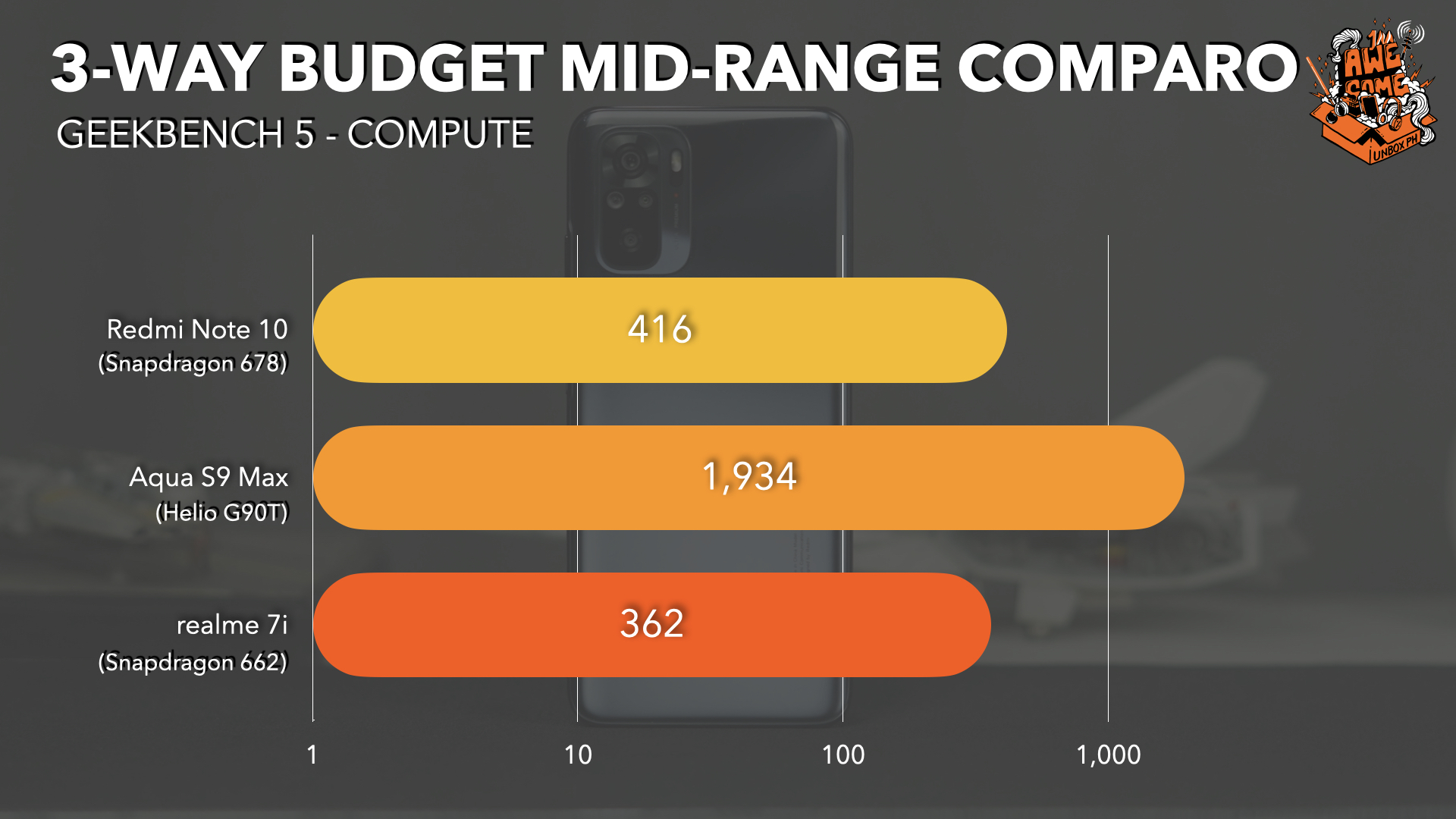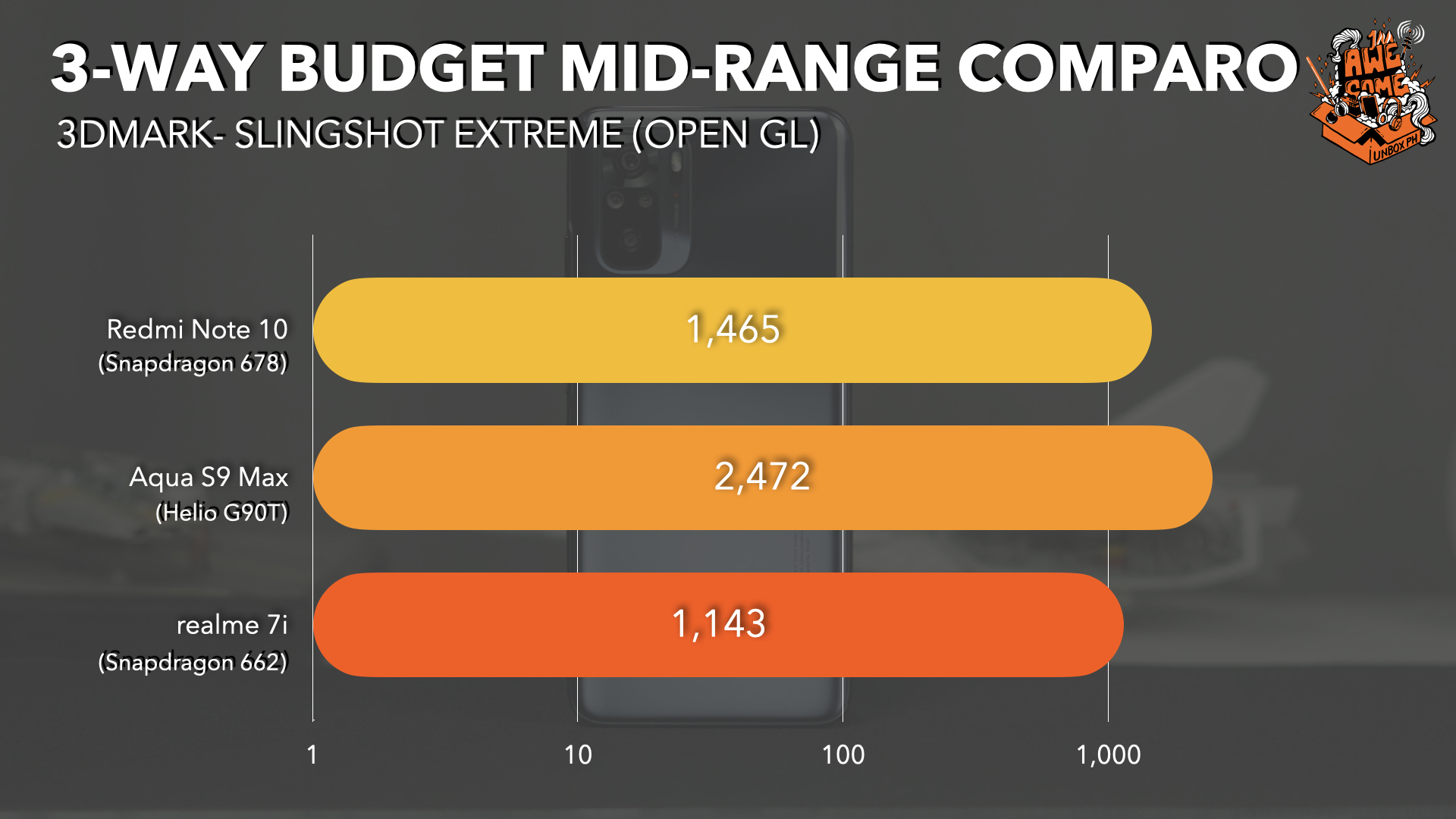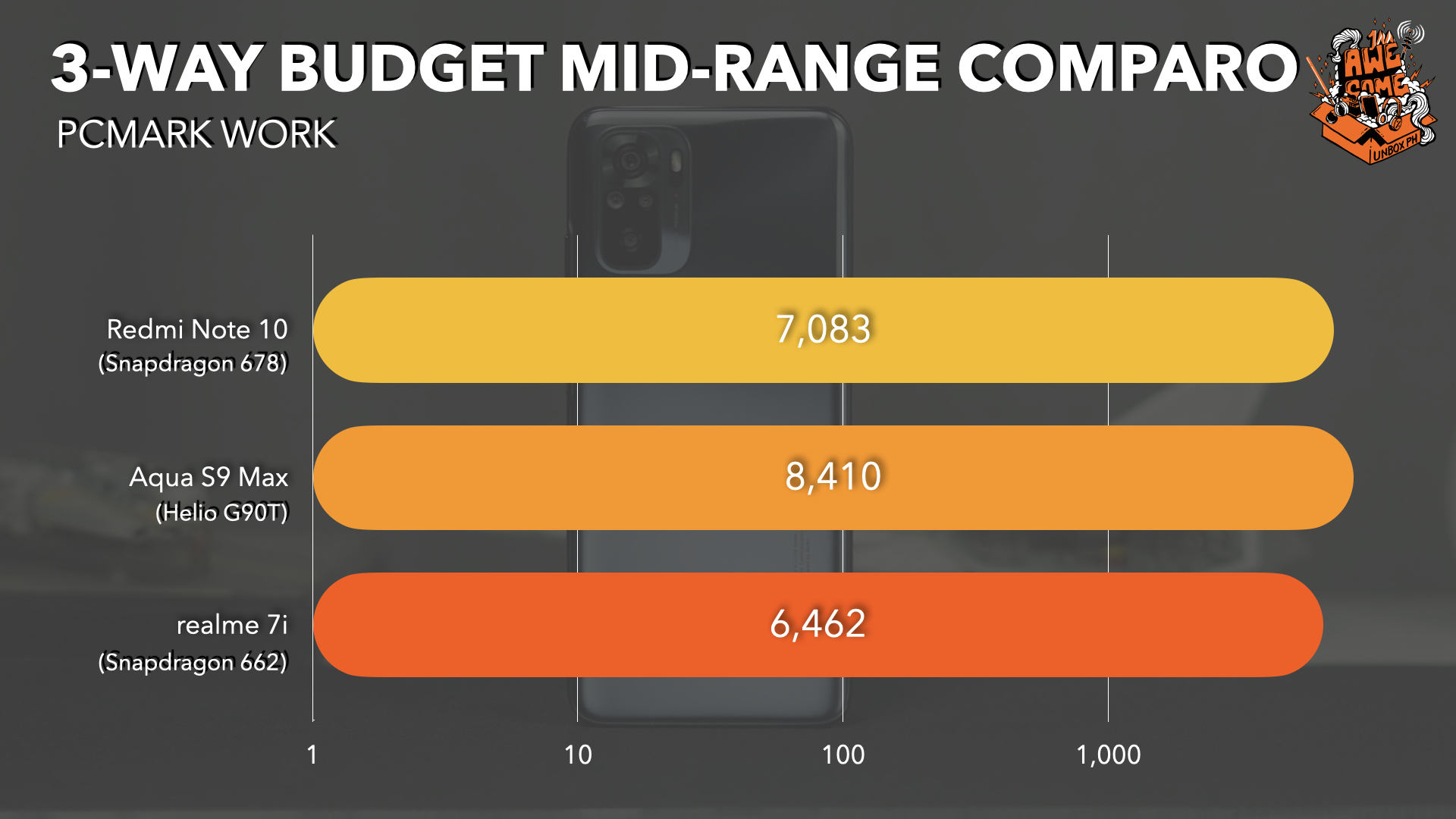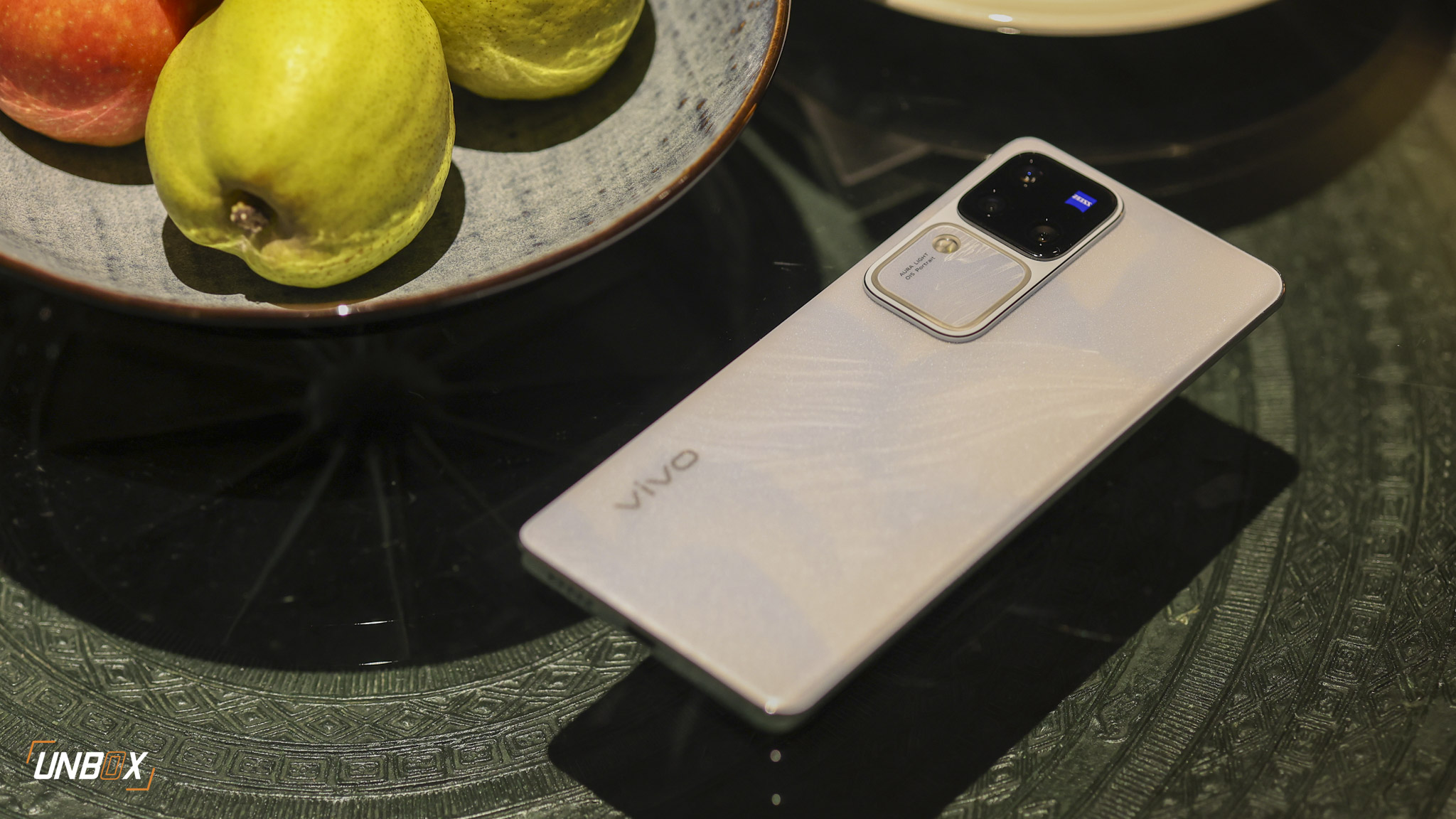Review Verdict: The Redmi Note 10 brings incredible value to the under Php 10K price segment, something that’s been par for the course for the brand ever since its inception and its arrival in the Philippines. But even for Xiaomi’s standards, the Redmi Note 10 is something else. This mid-range phone packs an AMOLED panel as well as a fairly powerful processor all under Php 10K – and its biggest competition at launch will be stock levels, not other phones.
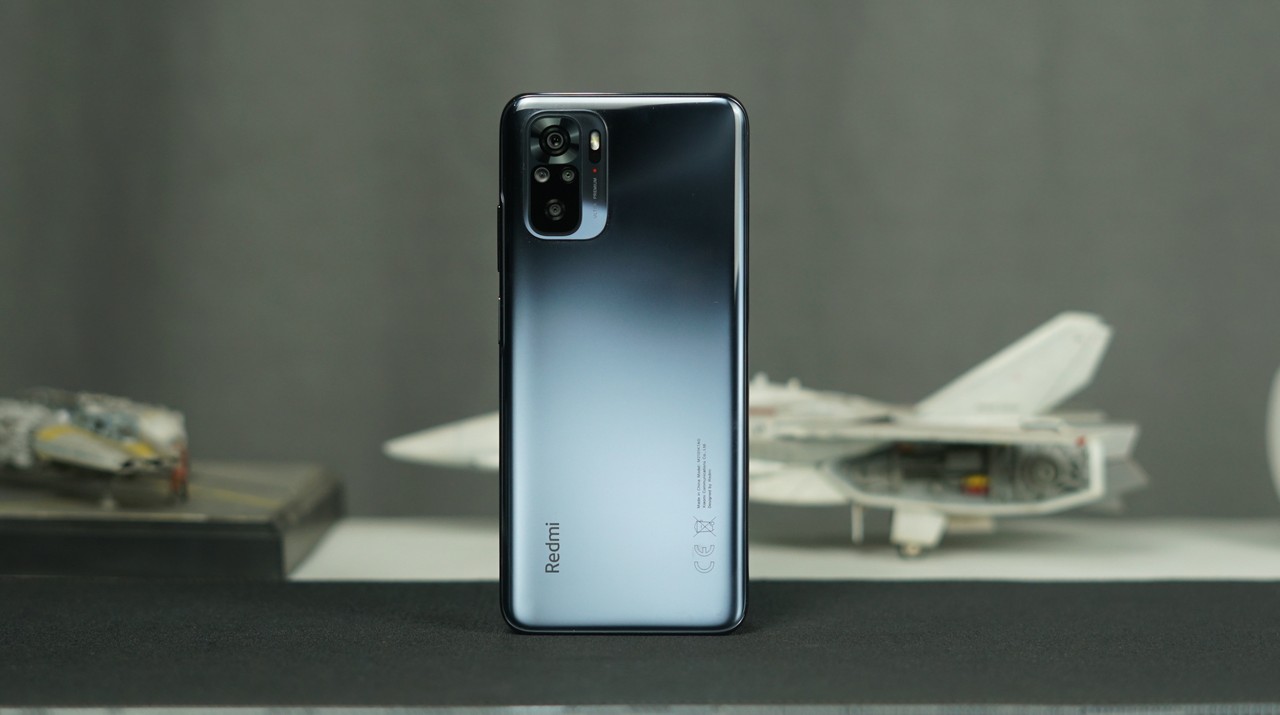
Redmi Note 10 Philippines Specs:
- Snapdragon 678G processor
- 4GB/6GB LPDDR4X RAM
- 64GB/128GB UFS 2.2 storage, expandable via MicroSD
- 6.43-inch Full HD+ Super AMOLED display
- 48-megapixel f/1.9 Sony IMX582 main camera with PDAF, 2-megapixel f/2.4 macro camera, 8-megapixel f/2.2 ultra-wide-angle camera, 2-megapixel depth sensor
- 13-megapixel selfie camera
- 4G, 5G
- WiFi, Bluetooth 5.1, side-mounted fingerprint scanner
- Stereo speakers
- 5000mAh battery
- 33w fast charging
- Android 11, MIUI 12
Pros
- AMOLED display under Php 10K
- Good cameras
- Insane battery life
- Incredible value for money
Cons
- It’s likely to go out of stock fairly quickly
- The display is only 60Hz
- No in-display fingerprint scanner despite being AMOLED
We’ve been used to Xiaomi crushing it every time they release a brand new phone under their Redmi line, but the Redmi Note 10 is truly something else. This budget phone can easily be classified as a mid-range device if it wasn’t for its truly insane price – and anyone looking for the most bang for their buck would need a very compelling reason NOT to buy the phone when it hits stores.
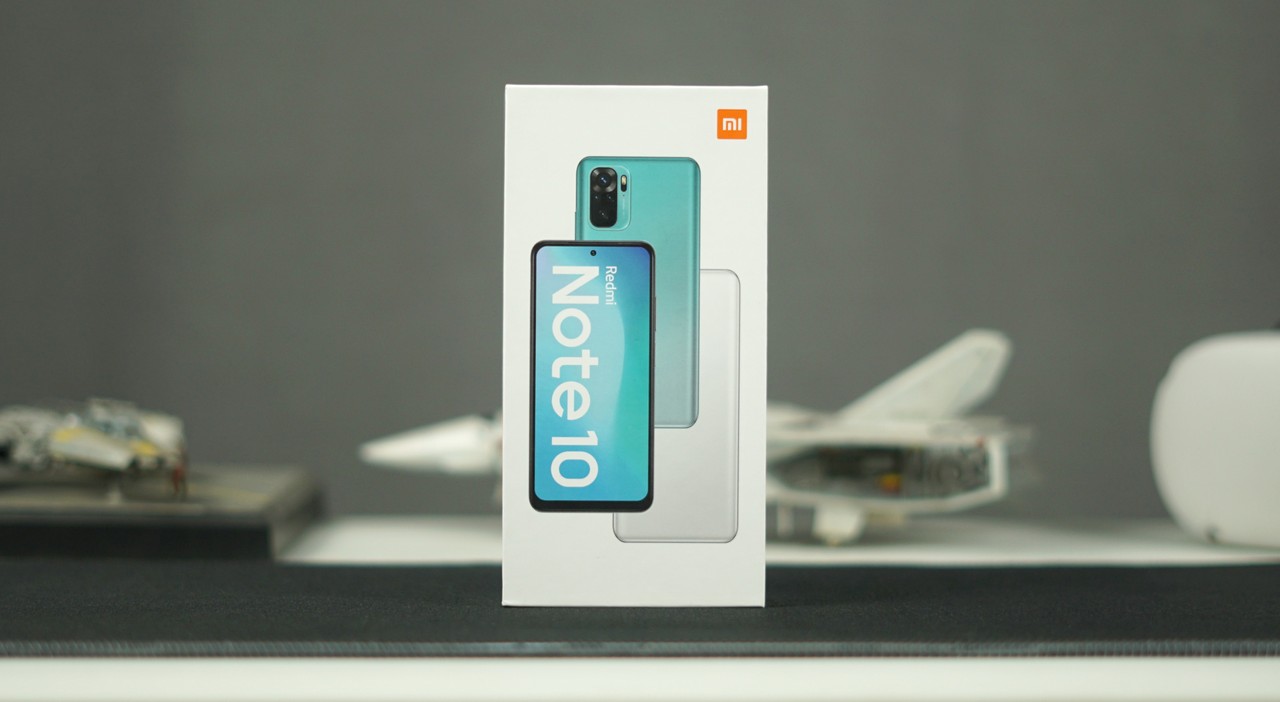
Packaging and contents:
The Redmi Note 10 comes in a plain white box with the photo of the phone printed in front.
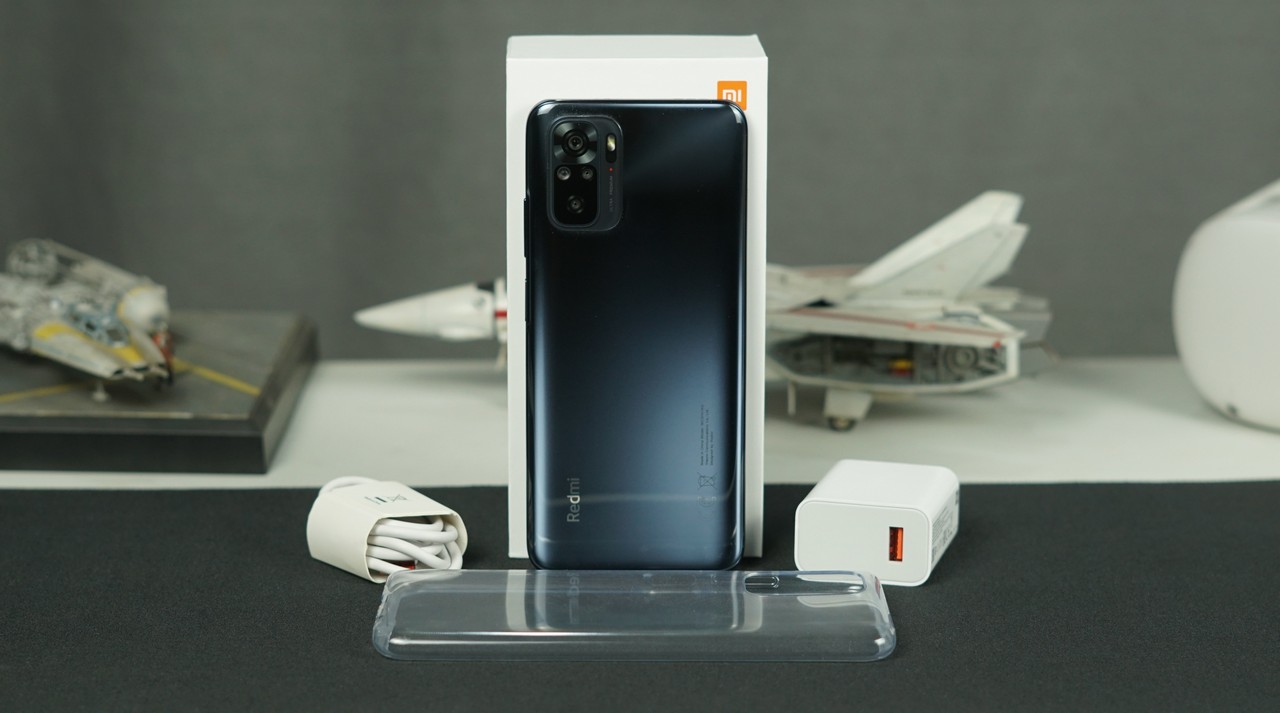
Inside the box sits the phone, a silicone case, a USB fast charger as well as a USB Type-C cable, and the requisite documentation.
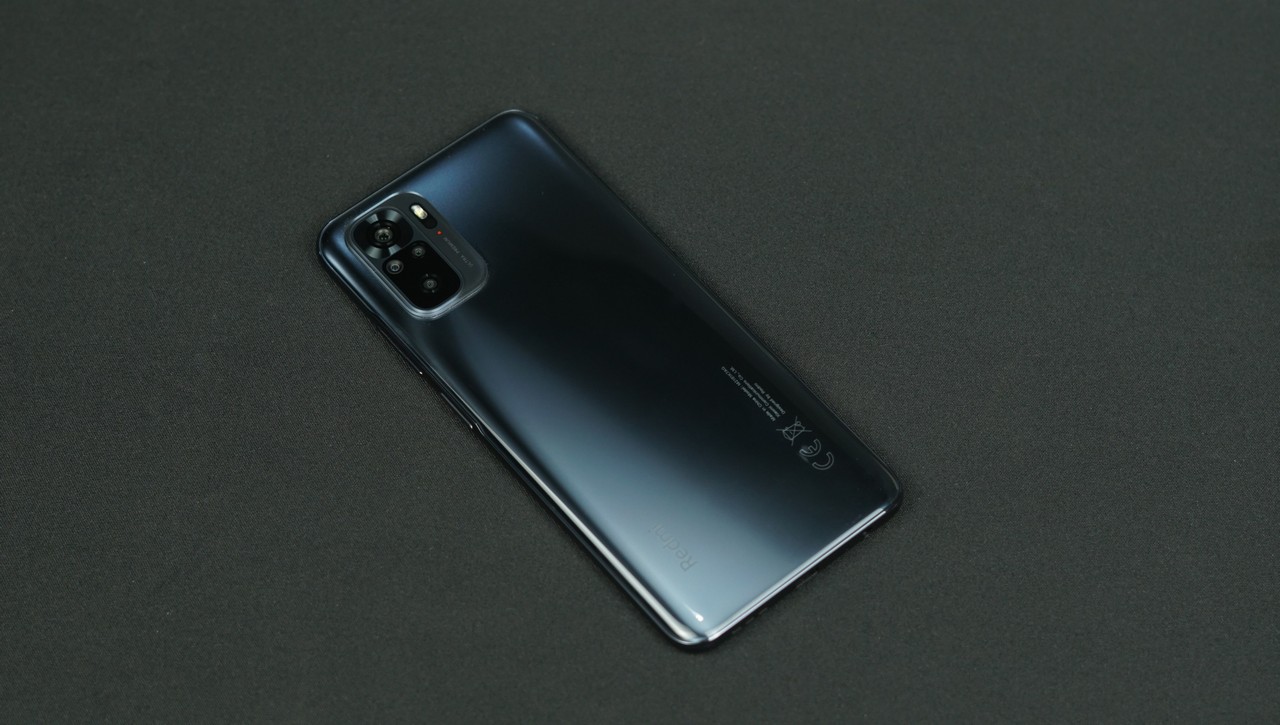
Design
Despite slotting under the Php 10K price point, the Redmi Note 10 does not feel like a budget phone. Sure, the back uses plastic that’s made to look like glass, but it doesn’t look or feel cheap. Quite the opposite in fact – and despite our review unit is the basic Onyx Gray color, it still looked and felt more expensive than it actually is.
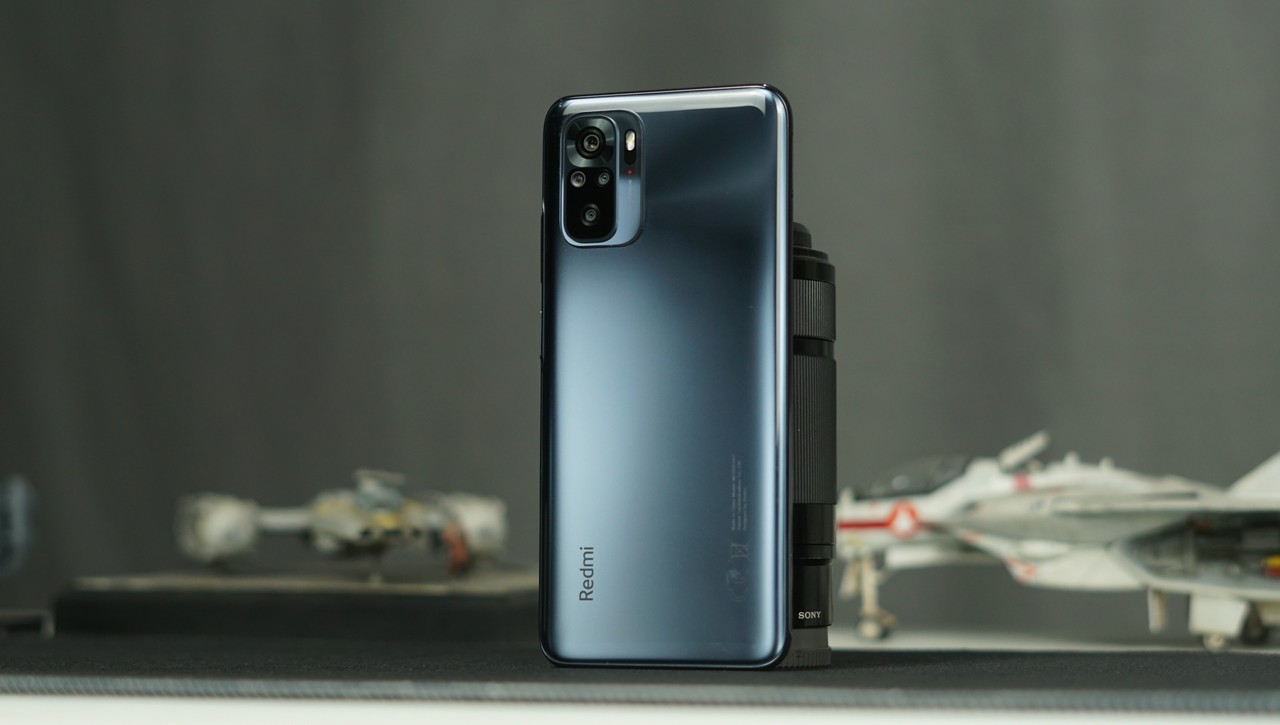
The quad-camera stack uses a rectangular camera module that’s tucked neatly on the upper left side of the phone’s rear. The power and volume buttons are on the right side, with the former pulling double duty as the fingerprint scanner. There are two speaker grilles here (one on the top and on the bottom) and the phone still sports an IR module on the top that’s pretty much become a trademark for Xiaomi-made phones.
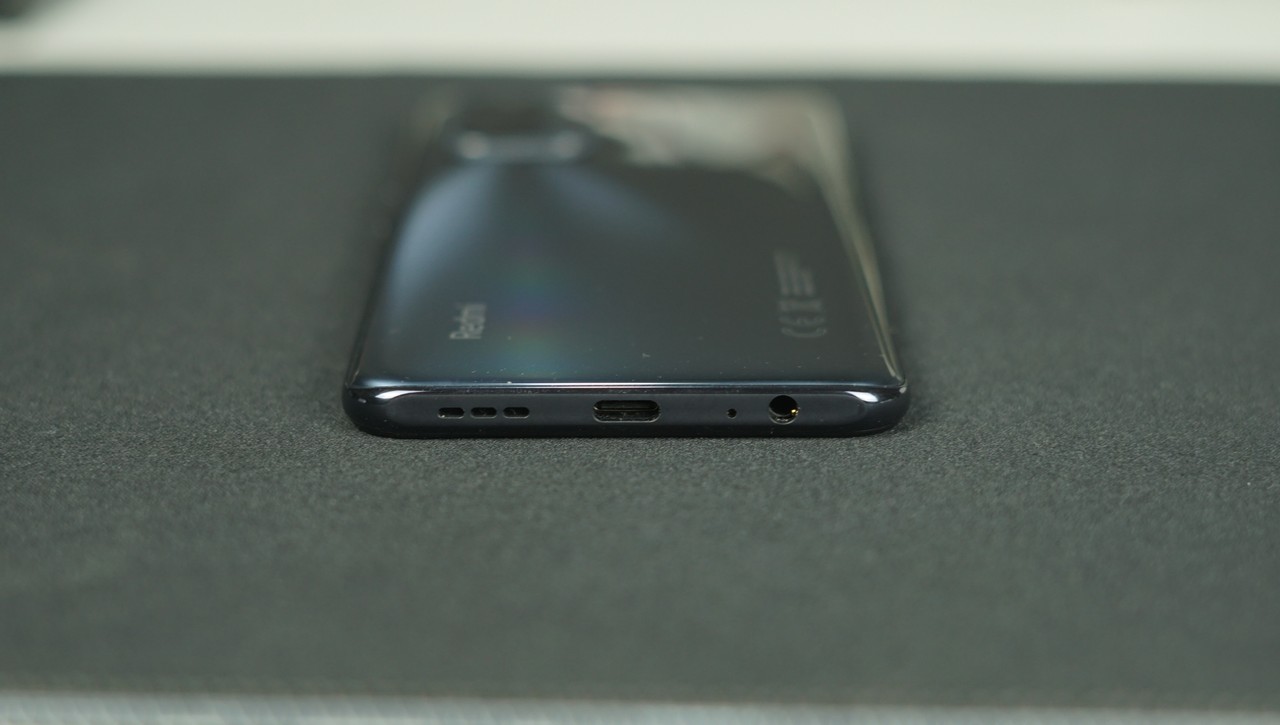
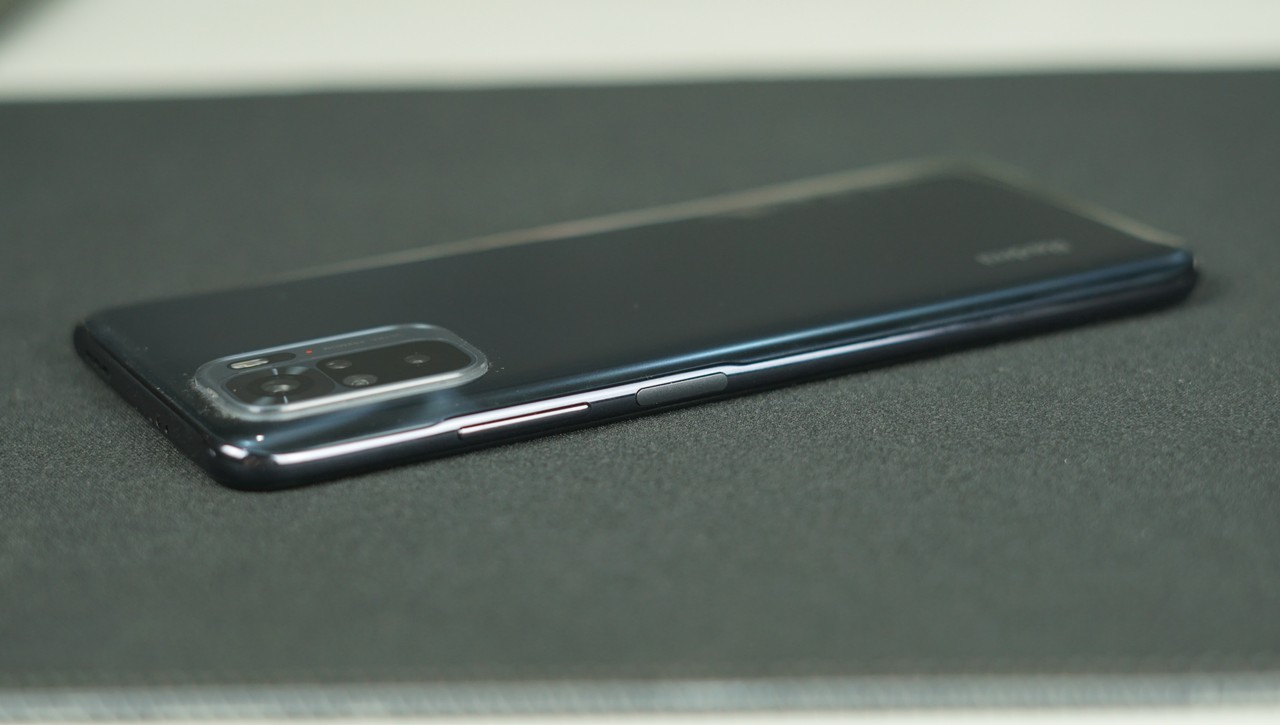
The phone still has a 3.5mm jack at the bottom, and it uses a USB Type-C port for charging.
Overall ergonomics are good, and the phone feels comfortable to hold and use thanks to its curved sides and rounded corners. The camera module is a little too large for my liking, but that’s more of a personal gripe than a flaw in the design.
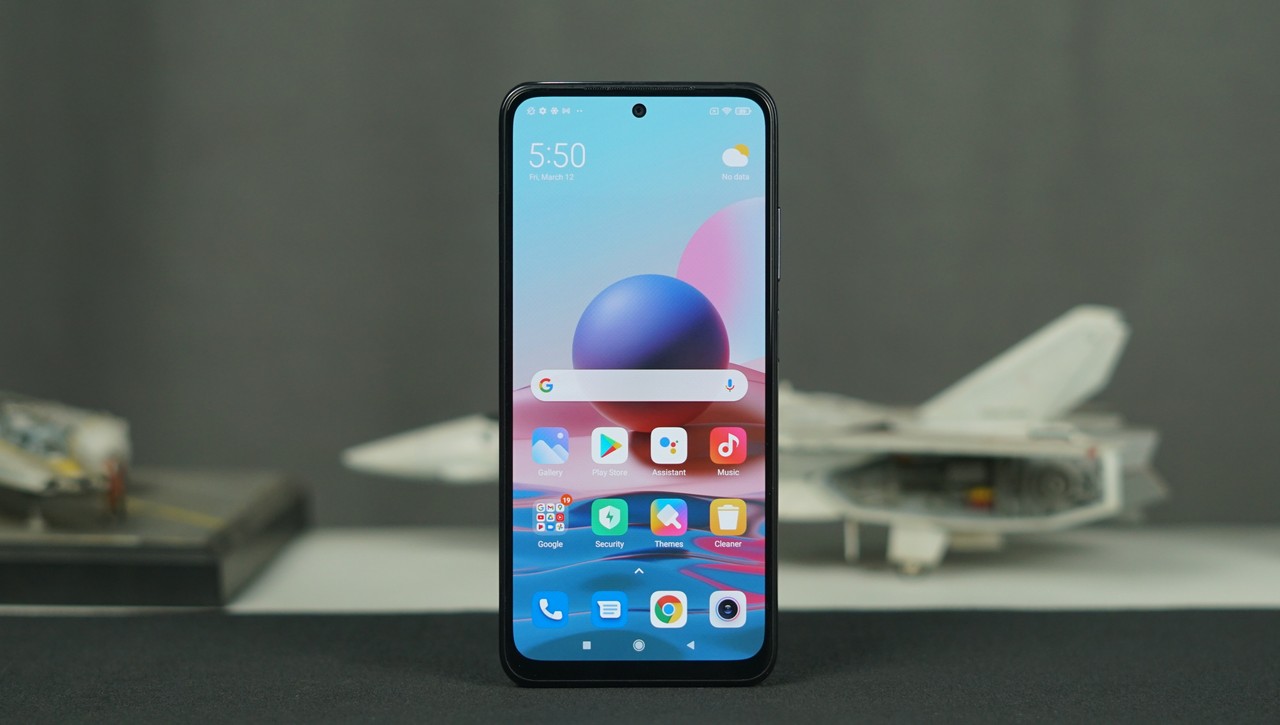
Display
One of the biggest advantages of the Redmi Note 10 VS other phones in its price range is the display. It’s currently the most affordable phone in the market that has a Super AMOLED panel, which makes it fairly unique in that regard.
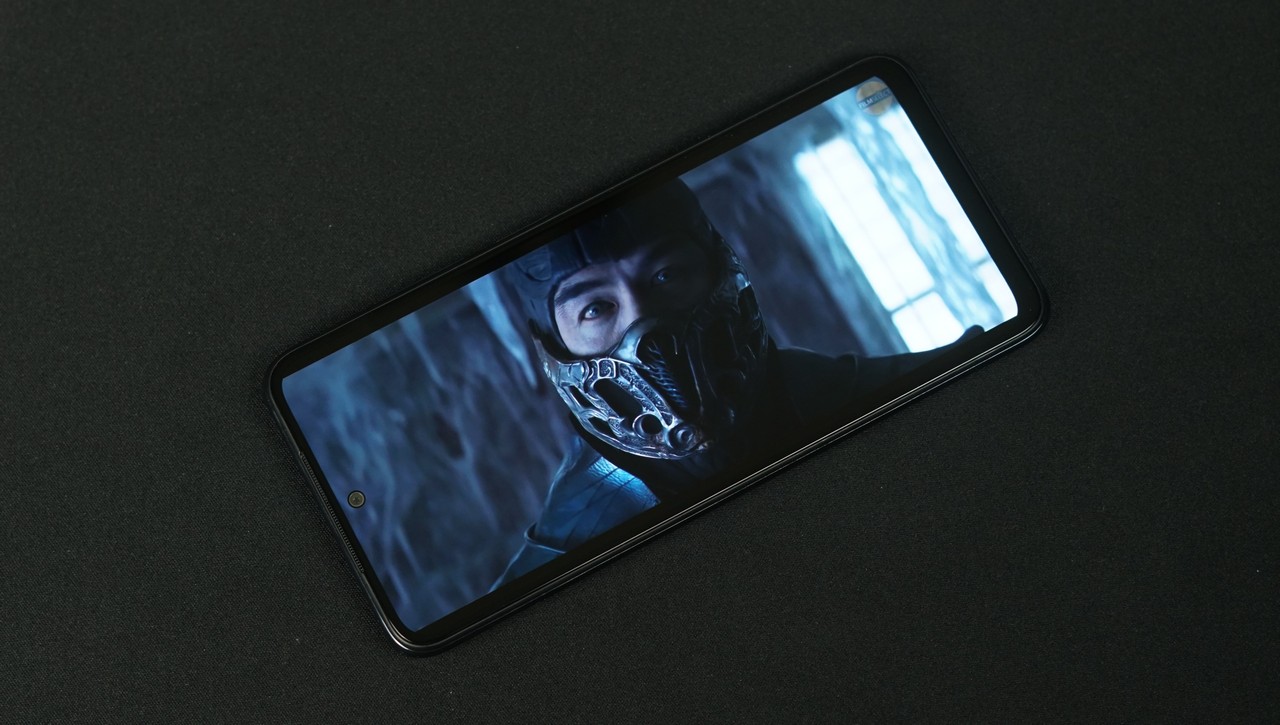
The AMOLED panel on the Redmi Note 10 measures 6.43-inches, has a Full HD+ resolution (1080 x 2400), and has a maximum brightness of 1100 nits at its peak. It’s protected by Gorilla Glass 3 and is Widevine L1 capable. The selfie camera is a punch-hole type, and clocks in at 13-megapixels.
It’s not perfect though – the refresh rate is locked at 60Hz and you’re not getting an in-display fingerprint scanner, but honestly, those two things are easily overlooked considering the price. And seeing to how poorly under-display fingerprint scanners work when put in a device that’s aimed at lower price points, I’m not entirely sad not to see one in the Redmi Note 10.
As far as the 60Hz refresh rate goes, I’d gladly trade a faster refresh rate if it meant getting a nicer, more vibrant Super AMOLED display.
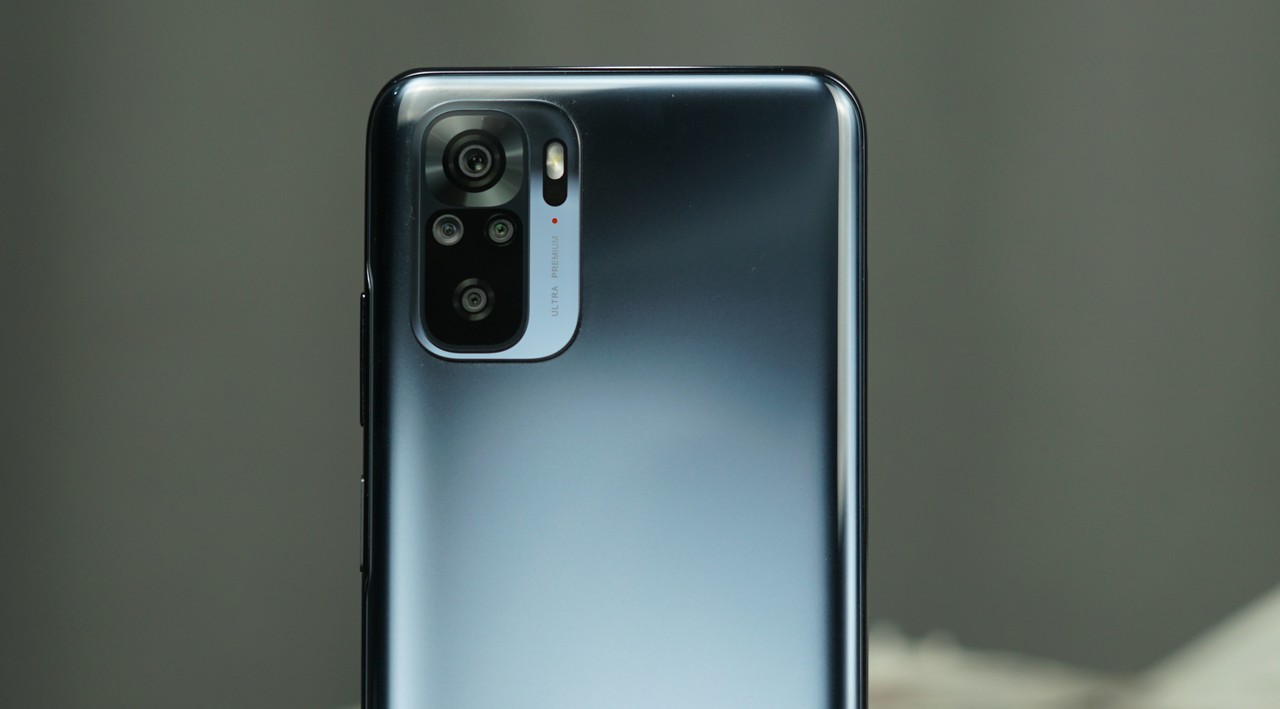
Camera
The phone uses a 48-megapixel f/1.8 aperture camera as its main shooter, accompanied by an 8-megapixel ultra-wide camera with an f/2.2 aperture lens and two 2-megapixel cameras for macro and depth information.
As far as photos go the Redmi Note 10 does pretty well considering it’s a budget phone. There’s plenty of detail in brightly lit scenes, though the phone starts to struggle a bit in lower lighting situations. The wide-angle camera starts to see noise indoors where there’s not a lot of available light, though photos are still serviceable as long as you don’t pixel peep.
The selfie camera takes fairly good photos without too much over-smoothening that’s usually present in budget phones.
Performance, software, and battery
The Redmi Note 10 comes with Qualcomm’s Snapdragon 678 chipset, a brand new chipset launched only recently.
The Snapdragon 678 is built on an 11nm process and doesn’t differ that much from the earlier Snapdragon 675 chipset. The main difference between the two is the higher clock on the two Kryo 460 Gold cores at 2.2GHz. It still has 6 x 1.7GHz Kryo 460 Silver cores. The GPU remains unchanged as well, as it’s still an Adreno 612.
Overall performance is what you’d expect from a mid-range phone, and while you’ll have to turn down some graphical settings on more demanding games like Genshin Impact, it still performed better than some of the same phones in its price range. We found in our Redmi Note 10 review that it’s more than enough for most people in day-to-day tasks.
The phone will be offered in two storage and RAM configurations in the Philippines: 4GB/64GB and 6GB/128GB.
The phone comes with MIUI 12 built on top of Android 11. Xiaomi has done a great job in addressing some of the concerns that users had with MIUI, and while they haven’t completely fixed some of the annoying stuff here (there’s still a lot of stuff that comes pre-installed with the phone) overall the interface feels cleaner and faster to use.
The Redmi Note 10 comes with a 5000mAh battery, which is pretty big as far as power packs go.
Our standard battery rundown test sees the phone dropping from 100% to 17% in 18 hours and 20 minutes – astounding battery life for a phone of its class.
Once you drain that battery, you can quickly charge the phone up via the fast charging tech, which sports 33W charging to fill the battery up quicker.
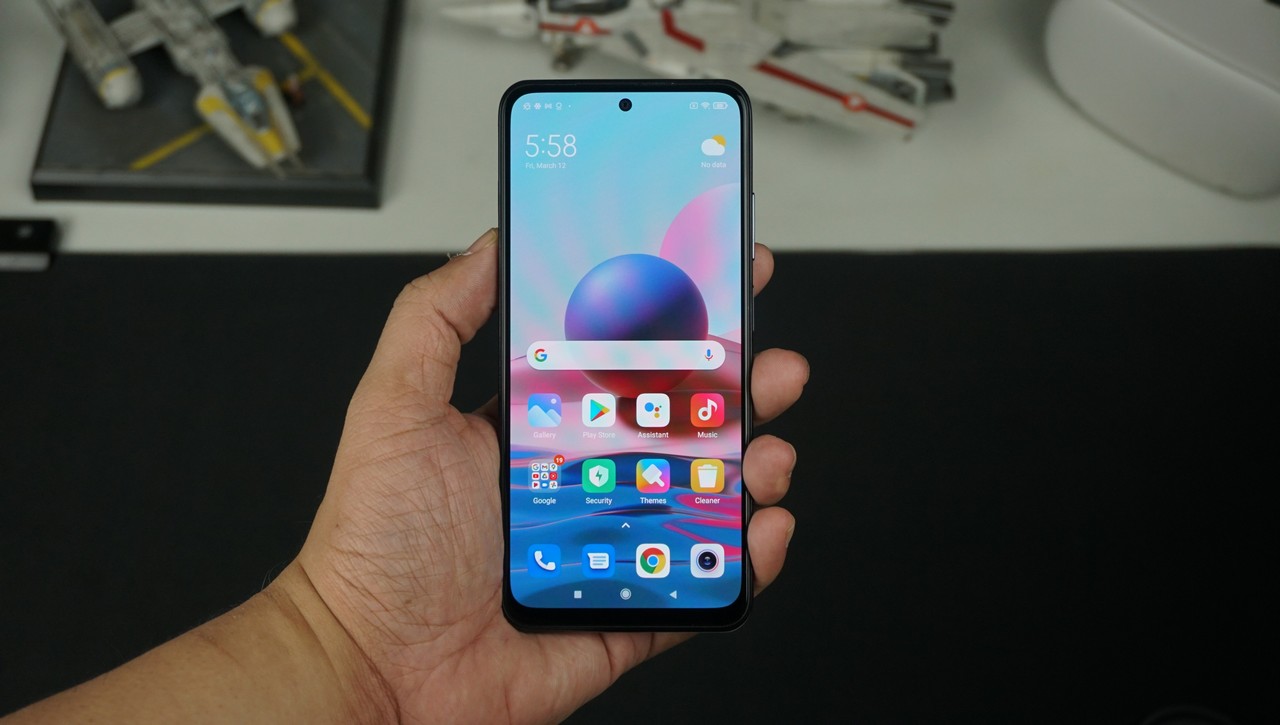
Wrap-up and conclusions
We’re probably all used to Xiaomi outing amazingly priced, bang-for-the-buck smartphones by now, but even considering those standards the Redmi Note 10 is truly one of a kind in terms of value.
Our Redmi Note 10 review in the Philippines found that it really feels like a phone that should be priced at around Php 15K, and the fact that it’s not is one of the reasons why I’m overwhelmingly recommending this to anyone looking for a budget phone to buy this year.
You’re really getting your money’s worth with the phone, and though if you have the extra cash I definitely recommend you get the higher tier variant.
The only issue you’re going to run into with the Redmi Note 10 will likely be stock – the phone’s almost guaranteed to sell out once it hits stores – so if you’re reading this and you want one, you better buy it as soon as you’re able to.
Redmi Note 10 Review Price Philippines
Redmi Note 10 in the Philippines will come in two variants: 4GB/64GB and 6GB/128GB. The 6GB/128GB version will retail at Php 9,990 and will be available on both Lazada and Authorized Mi Stores and official offline channels starting March 13. The 4GB/64GB variant is priced at Php 8,490 and will exclusively be available on Lazada with a Php 500 early bird discount on March 13.



